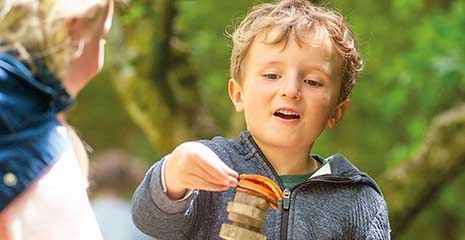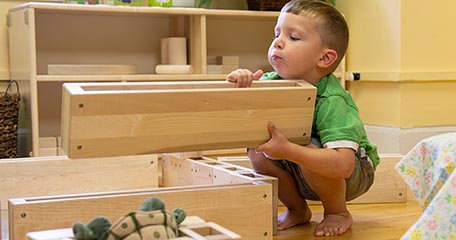Building STEM skills through block play
The Foundations of Learning
“If you take the child’s perspective, they are not doing science, technology, engineering and maths. They are living and learning. They’re engaging with their world and they’re making sense of it.”
- Hal Melnick, Course Instructor, Bank Street College of Education.
Science, technology, engineering, and mathematics are grouped together because they are interdependent on each other. We use this approach because we think it's the most inclusive for children. And we think that to prepare them for 21st century skills, we want to give them opportunities and choices that include
But as a learner, if you take the learners perspective, the child's perspective. They're not doing science and technology, engineering and math. They're living and learning. They're engaging with their world, and they're making sense of it. Carolyn Pratt saw this as the unit, and that's one of the big ideas in mathematics, the idea of a unit. There's nothing like having the experience of fractional parts and relationships in their history in their life history. To make my point that math is the study of relationships in the science of pattern.
It's a whole lot of abstract stuff we can talk about later on in life. But it builds from the experience that kids have had with well organized, well structured tools like the Pratt blocks.
The science that's in there. I mean, for Alliah to know that she can roll a cylinder or roll a car down. That's the science and gravity and other, balance, they're constantly trying to balance things. And they're at the point now where they know intuitively that if they add this, it's going to fall, and that comes from experience in working in the block area.
Technology people often think of as the computer or the ipad. But the truth is simple machines were some of the earliest technologies. So the incline plane, how a car can roll down a ramp, the wheel and the axle. Those are early technology. And when children realize that, you can build the later skills that they will use.
You live STEM when you engage with tools and materials. And what better place to do that than a classroom with a knowledgeable teacher who can set up the environment so that kids can engage with the scientific principles and ideas that come from building a structure and finding out when you first build that things fall down, they keep on falling down. Well, that's the problem that a kid might encounter. And then he or she has to figure out how to make it more sturdy. So you're living with the engineering problem.
You're living with the technology of the tool, and you're solving a problem. So preschool kids, that's the place to start the necessary underpinnings for engineering and mathematical ideas.
And I think they're beginning to understand that. There's always another question. There's always something else to find out. That's power that's a powerful understanding to have. And we want children in schools, in public schools, very diverse children to have the power of what their ideas are.






